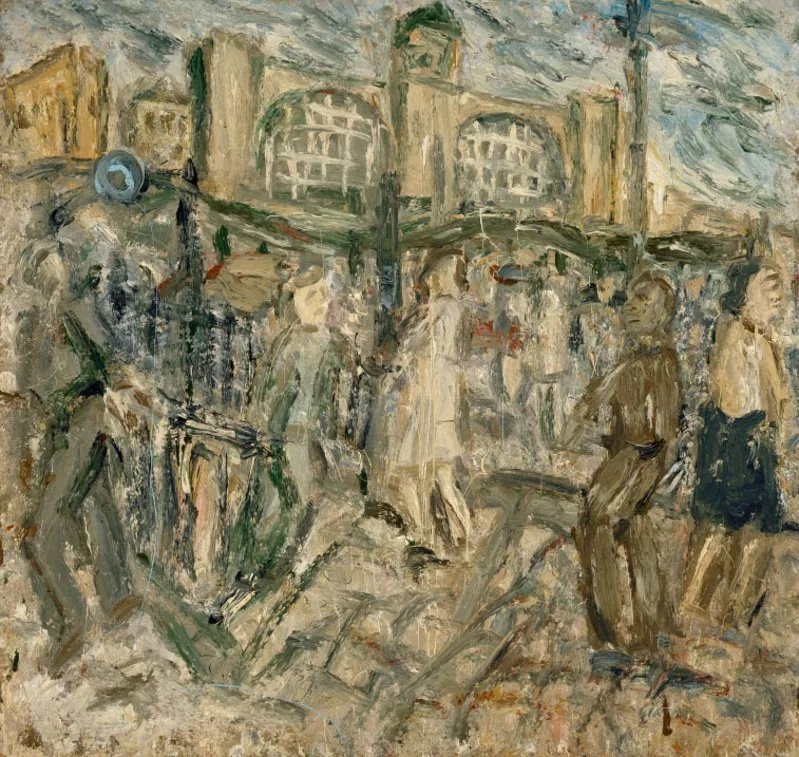Ephemeral Film Memorabilia
16 June 2022
The movie poster may be ubiquitous in most teenage bedrooms, but the rare and original can be collectable too.
Alexander Larman
Alexander Larman is the author of several historical and biographical titles including The Crown in Crisis & Byron’s Women. He is books editor of The Spectator world edition and writes regularly about literature and the arts for publications including The Observer, Prospect, The Chap and the Daily Telegraph.
Virtually every decade produces a film poster that can be found on a thousand bedsit walls. In the Eighties, it was Béatrice Dalle pouting for France from the advertisements for Betty Blue, and in the Nineties, no self-respecting cineaste would have been found without the original one-sheet for Tarantino’s Pulp Fiction, complete with a brunette-wigged Uma Thurman. At their best, cinema posters transcend the usual requirements of marketing and become works of art themselves, offering iconic representations of the (hopefully) classic films that they are promoting.
Nonetheless, it is surprising to discover that perfectly preserved vintage cinema posters are now worth a fortune. Last year, Heinz Schulz-Neudammn’s poster design for the 1927 film of Metropolis sold for $1.13 million at a federal auction in Texas (against a starting price of $367,000) and is now the most expensive 20th century cinema poster ever to have been sold. It is of legendary scarcity – only three other copies are known to exist, with one in the Museum of Modern Art and another owned by Leonardo DiCaprio – and has now established that these once-disposable and ephemeral items are now extremely big business.
Goldfinger (1964) Original UK Cinema Quad Poster, £7,950.00.
Available at Cinema Poster Gallery.
It’s no surprise that London has several galleries dedicated entirely to these artefacts, including the Cinema Poster Gallery in Battersea. Unsurprisingly, according to the CPG’s Owen, James Bond posters remain big business, given both the franchise’s longevity and the intrinsic aesthetic interest of the artwork. There, you can buy everything from an original 1964 UK quad poster for Goldfinger (£7950) to the 2021 US one-sheet for last year’s No Time to Die (£150). As Owen says, ‘James Bond and Star Wars are probably the blue chip franchises of modern cinema posters. The artwork used in the posters is generally outstanding and everyone is familiar with the franchise.’ As he notes, ‘They are big sellers for us.’
The rise of collectable cinema posters is a phenomenon that is rooted in the popularity of the Golden Age of classic film. Unsurprisingly, original advertisements for films such as King Kong and Frankenstein are worth huge sums of money and immaculate copies sell at auction for considerable six-figure sums. Yet those on smaller budgets can also buy their own piece of cinematic history for little more than the cost of a mass-produced print. The Cinema Poster Gallery is currently offering a US one-sheet for David Lean’s Doctor Zhivago for a mere £150, and even an original 1977 poster for Star Wars – one of the most famous ever produced – can be acquired for £1895.
When it comes to collectability, two things are all-important; condition and scarcity. As Owen says about the first, ‘Cinema poster condition grading often operates on a 10-increment scale, with 1 being very poor and 10 being mint. Generally, a poster needs to be above the middle of this scale to be tradable.’ Given how most posters have been treated as ephemeral, it is unsurprising that very few mint items have survived. But then the even more sought-after items were barely distributed.
Famously, the earliest promotional items for Return of the Jedi were recalled because the original title – Revenge of the Jedi – was felt to be inappropriate (Jedi do not seek revenge) and, as Owen points out, ‘even some of the withdrawn posters will find their way to collectors. An early Pulp Fiction poster that featured a box of Lucky Strikes was withdrawn on the threat of legal action from British American Tobacco, and a poster for the first Spider-Man film that features the Twin Towers was also withdrawn after 9/11. Now, it’s becoming increasingly popular with collectors.’ Indeed, it can be yours for £1095 from the Cinema Poster Gallery.
Back To The Future, original Australian movie poster, framed, £385.00.
Available from The Movie Poster Art Gallery.
The Man Who Knew Too Much, original US insert poster, framed, £485.00.
Available from The Movie Poster Art Gallery.
Not all posters are collectable. Artwork for children’s films seldom finds a market – ‘if we acquire large collections from cinemas we won’t even list most of these posters’ – and the mass production of many recent advertisements means that they are so common as to be almost insignificant from an investment perspective. Nonetheless, if they retain an aesthetic interest, they will always find some sort of market. As Owen says, ‘Original posters boast a real wow factor when seen in the flesh. Take Back to the Future, for instance. Everyone knows and loves the film and the poster artwork by Drew Struzan is instantly recognisable.’
And what’s Owen’s own favourite? It’s a simple, even classic choice. ‘Pulp Fiction. It’s a poster I can recall having as a teenager, albeit in mass produced form. I love the film and the poster and always keep a couple of originals in stock to meet ongoing demand.’ Yours for £895, framed; a small price to pay for a modern artwork this iconic. But poster collectability is here to stay. As Uma Thurman’s character says in the film, ‘Trying to forget anything as intriguing as this would be an exercise in futility.’

































